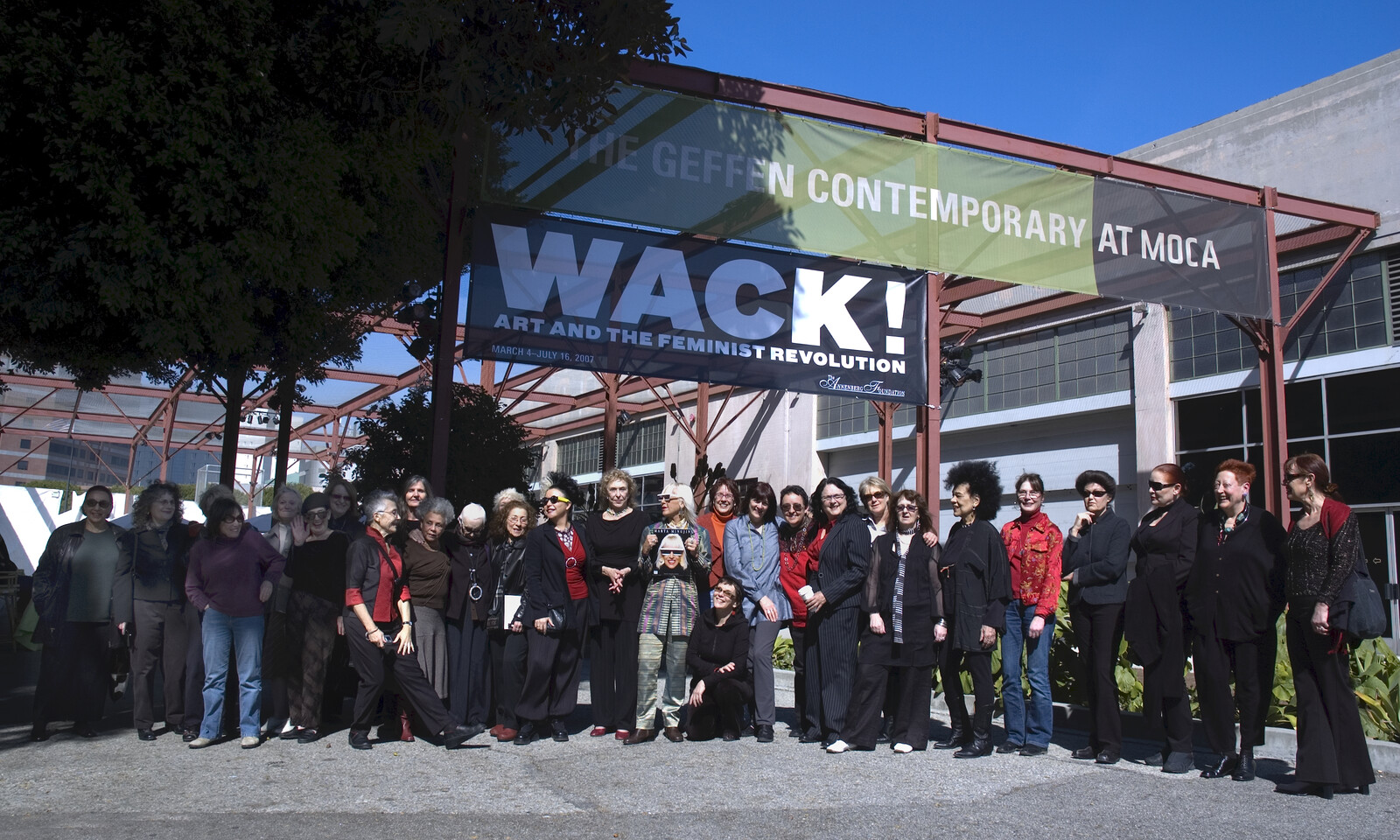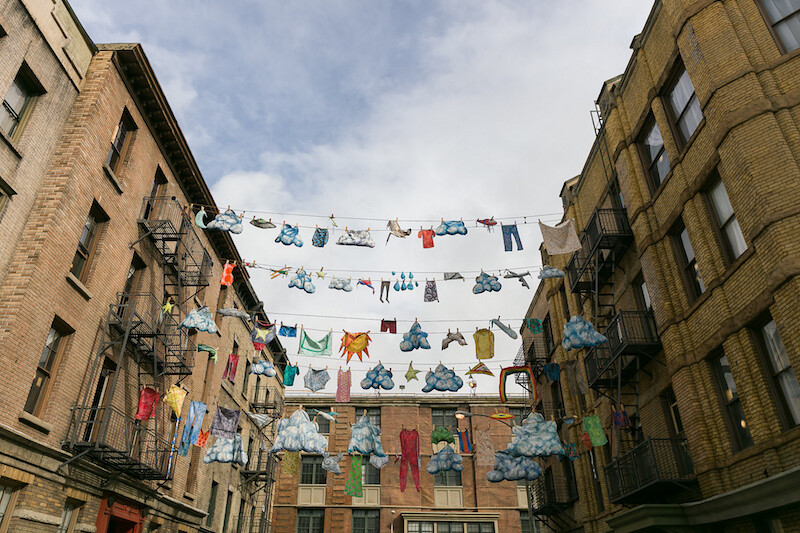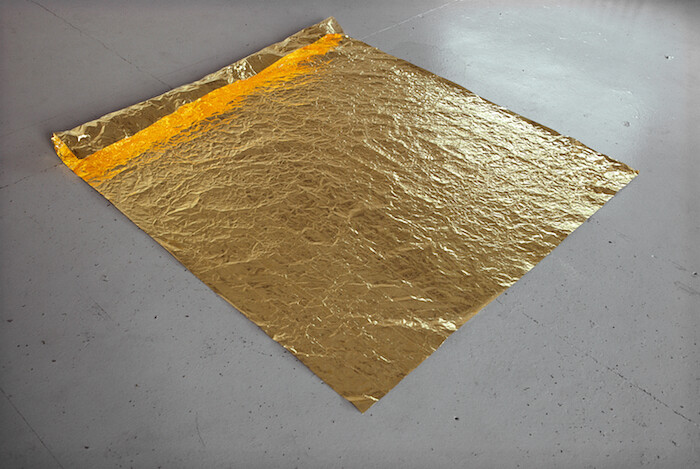Categories
Subjects
Authors
Artists
Venues
Locations
Calendar
Filter
Done
February 8, 2021 – Feature
“WACK! Art and the Feminist Revolution”
Wendy Vogel

The Rearview series addresses blind spots in contemporary art history by returning to an influential exhibition, work, or text from the past and reflecting on its relevance to the present. In this edition, Wendy Vogel considers how the 2007 touring exhibition “WACK! Art and the Feminist Revolution” marked a generational shift in art criticism.
Feminist art history may come to be defined as the era before and after WACK!. The onomatopoeic word—more a metaphorical whip-crack than a line in the sand—is shorthand for “WACK! Art and the Feminist Revolution,” an exhibition curated by Cornelia Butler that opened at the Museum of Contemporary Art, Los Angeles (MOCA) in March 2007. This pioneering institutional survey of feminist art brought together work made by more than 120 female artists and collectives between 1965 and 1980. In the introduction to the 500-plus-page exhibition catalogue, Butler stated her curatorial goals: “My ambition for ‘WACK!’ is to make the case that feminism’s impact on art of the 1970s constitutes the most influential international ‘movement’ of any during the postwar period—in spite or perhaps because of the fact that it never cohered, formally or critically, into a movement.” It remains a bold statement today; it was …
February 21, 2020 – Feature
Los Angeles Roundup
Sabrina Tarasoff

“The Magic and Flair of Mary Blair,” an exhibition of the Disney artist’s dreamy, acid-laced concept pieces at the Hilbert Museum of California Art, burned to mind what freakish and caustic things fairytales can be. Best known for her work on Alice in Wonderland (1951), Blair’s mutant gouaches drag you with Alice into the fantastical inversions of Wonderland, a place “more like a corkscrew than a path,” where lawless helixes swallow rooms and minacious figures are found lurking in the Day-Glo darkness. Through the looking glass, everything from the houses to paths act on their own volition; even the flowers have a will (if you’re worth talking to): “You can’t possibly do that,” advises a Rose in Carroll’s sequel, “I should advise you to walk the other way.” Alice considers this bad advice, and so heads in the “wrong” direction, straight back to where she started. Which is to say, she’s quick to realise that in the context of the fantastic, if it appears you’re getting lost then you are probably going the right way.
Though this city is filled with the iconoclastic fantastic, its galleries during Frieze week seem more determined to exploit a bygone image of subversion than …
February 28, 2019 – Feature
Los Angeles Roundup
Christina Catherine Martinez

“This is a stupid town. It’s lazy, it’s polite, it’s so sissy in its mentality, so go along with everything that goes along. It’s corporate-owned, it’s a town owned by Hollywood, and it’s about time it grew up. It’s about time that it took art and said come on baby, show me something!” Thus spoke John Cassavetes in a behind-the-scenes documentary for his 1977 film Opening Night. The clip played as part of an intro bumper at Now Instant Image Hall, a microcinema in Highland Park with a bookshop selling various zines and small press titles related to its eclectic programing, from Susan Cianciolo’s films to historical gems like Reyner Banham Loves Los Angeles (1972). The latter screened just a few days before the cultural Leviathan known as Frieze Week descended upon the city, bringing with it a deluge of rain and the attendant disenchantment.
Cassavetes’s diatribe drew laughs and cheers from the 60 or so rain-soaked people nestled into the space (I love the way he hisses out the word sissy—his hatred for Los Angeles is unimpeachably authentic) and it does presciently, if cynically, encapsulate this moment of arrival. The LA art scene grew up. Or at least, the kids …
September 1, 2015 – Feature
Felix Gonzalez-Torres’s "1990: L.A., ‘The Gold Field’"
Felix Gonzalez-Torres

A dialogue made of gold: such was the conversation between artists Roni Horn and Felix Gonzalez-Torres, initiated in the early 1990s and only interrupted due to Gonzalez-Torres’s death in 1996. It all started on a spring afternoon in 1990, when Gonzalez-Torres, along with his partner Ross Laycock, visited Horn’s solo exhibition (April 22–July 22, 1990) at Temporary Contemporary, the temporary venue of the Museum of Contemporary Art in Los Angeles, and encountered her 1982 work Gold Field.
Placed directly on the floor, Gold Field consists of a large and thin rectangular sheet made of one kilo of pure, annealed gold. Gold Field presented itself as “a new landscape, a possible horizon, a place of rest and absolute beauty,” giving the couple solace from their dramatic situation: Laycock was dying of AIDS, surviving the show only by six months, and the overall vision of the U.S. as a country that was facing “the abandonment of the ideals on which (it) was supposedly founded” was somber and asphyxiating.
Three years after this encounter with Gold Field, Gonzalez-Torres and Horn meet. Touched by their common affinities, Roni Horn sends Felix Gonzalez-Torres a square of gold foil, a sheet similar to those made by the …
